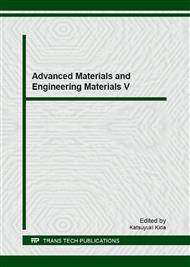p.125
p.132
p.138
p.144
p.149
p.155
p.160
p.165
p.172
Experimental Study of Failure Mode Transition in Semi-Crystalline Polymers Polypropylene under High Strain Rate
Abstract:
The brittle to ductile failure mode transition and the formation of adiabatic shear bands (ASB) of polypropylene were observed at high strain rate impact loading. The dynamic experiments were conducted using a split Hopkinson pressure bar (SHPB) set-up with hat-shaped specimens. The post-test observations of the recovered specimens were performed by polarized light microscopy. The mechanical behaviors of specimens are strongly influenced by temperature, the strength of specimen decreases with increasing temperature. Furthermore, the specimen fractures as a brittle solid at room temperature (20°C), while at a high temperature (100°C), the specimen fractures on a ductile model. At high temperature impact tests, shear bands are observed in the shear zone of the hat-shaped specimen, and the cracks formed at the corners propagate along the shear bands.
Info:
Periodical:
Pages:
149-154
Citation:
Online since:
August 2016
Authors:
Price:
Сopyright:
© 2016 Trans Tech Publications Ltd. All Rights Reserved
Share:
Citation:


